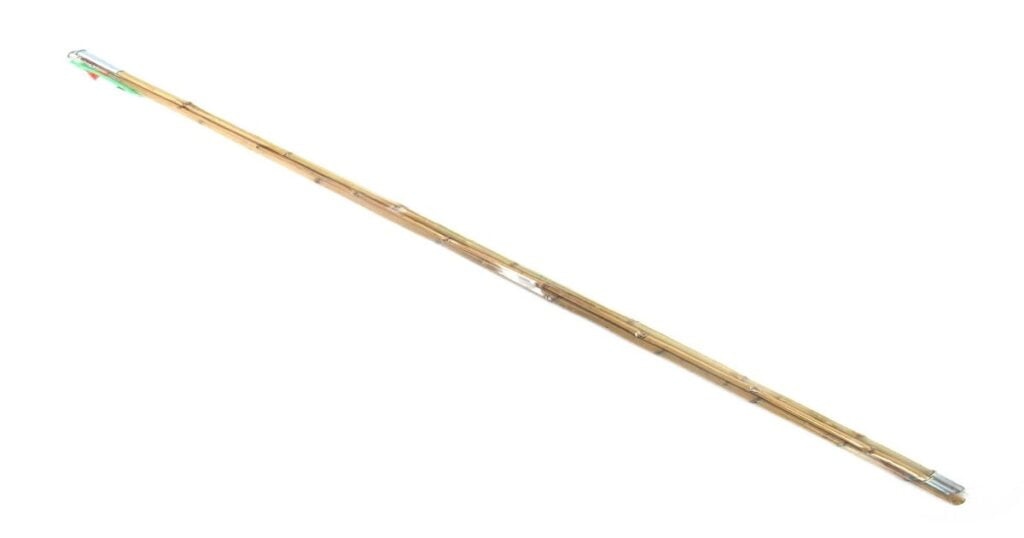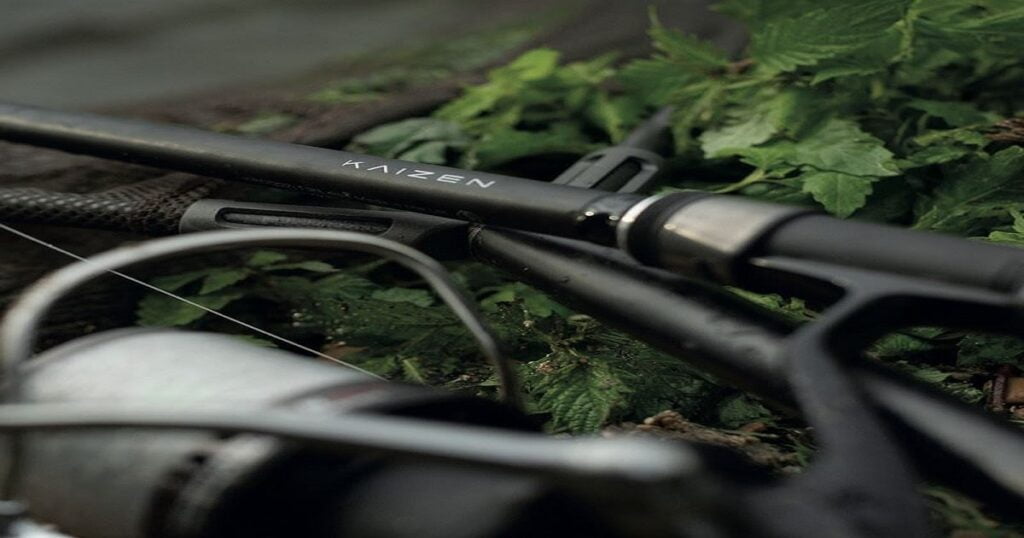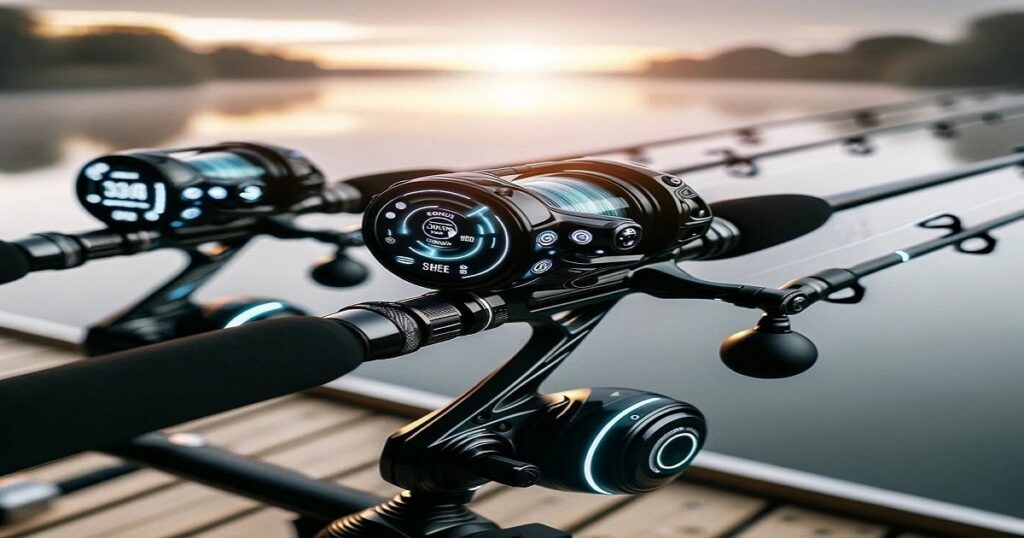Angling, one of the world’s oldest pastimes, has witnessed countless innovations over the centuries. At the heart of these developments stands the fishing rod—a tool that has evolved in tandem with our understanding of materials, design, and fish behaviour. Let’s embark on a journey through time, exploring the progression of the fishing rod from its humble beginnings to the modern marvels we see today.
Bamboo Beginnings
Long before the introduction of modern materials, early anglers used simple sticks and branches to catch fish. However, the first “specialized” fishing rods were crafted from bamboo. Bamboo’s inherent flexibility, combined with its lightweight and durable nature, made it an ideal choice for the job.
In Asia, particularly China and Japan, bamboo rods were not just tools but works of art, often handcrafted with intricate designs. These rods were straight, simple, and often paired with silk fishing lines.

The European Influence
As fishing grew in popularity in Europe, especially in England, there was a push for more specialized and efficient rods. The 17th and 18th centuries saw the advent of jointed rods. These rods, made of several bamboo pieces connected together, offered more length and flexibility.
Prominent developers and manufacturers such as Hardy Brothers began establishing their reputation during this period. They combined craftsmanship with a deep understanding of angler needs, leading to significant advancements in rod design.
Enter Fiberglass
By the 20th century, the world of materials science had made significant leaps. One of the standout innovations in rod manufacturing was the introduction of fiberglass in the 1940s. Fiberglass rods were revolutionary: they were lighter, more durable, and provided better action than their bamboo counterparts.
The transition was driven by both material availability and the demand for more versatile fishing equipment. Bamboo, while excellent, had limitations in terms of mass production and consistency. Fiberglass addressed these issues head-on.

The Rise of Graphite
In the 1970s, another significant shift took place with the advent of graphite rods. They were stiffer, lighter, and more sensitive than fiberglass, making them ideal for detecting subtle bites. Companies like Fenwick were at the forefront of this change, pioneering the use of graphite and setting the standard for modern rod design.
The reason for this shift was twofold: angler demand for more responsive rods and the natural evolution of materials science.
Modern Marvels: Carbon Fiber and Beyond
Today, many high-end rods utilize carbon fiber—a material praised for its strength-to-weight ratio. Additionally, modern rods often incorporate blends of different materials, optimizing them for specific types of fishing.

Rings, Handles, and More
Throughout history, the components of the rod have also evolved. Early bamboo rods had simple silk loops as guides. However, as fishing lines evolved, so did the need for more durable guides. Today’s rods feature ceramic or titanium guides, offering smoother line movement and better heat dissipation.
Handles, initially made of cork or simple wood, have seen innovations too. Modern rods feature ergonomic designs and materials like EVA foam, enhancing comfort and grip.
Why the Continuous Evolution?
Several factors have driven the evolution of fishing rods:
- Material Availability: As new materials become available or more cost-effective, they’re incorporated into rod design.
- Angler Demand: As fishing techniques diversify, rods must adapt. Whether it’s deep-sea fishing, fly fishing, or ice fishing, each demands unique rod characteristics.
- Technological Advancements: From improved manufacturing techniques to advancements in materials science, technology continually pushes the boundaries of what’s possible.
Where do we go next?

While predicting the exact trajectory of fishing rod innovation is challenging, we can speculate based on current technological trends and the evolving needs of anglers. Here are some potential directions for the next generation of fishing rods:
- Smart Rods:
- Just as we’ve seen “smart” technology infiltrate various aspects of our lives, we might soon see fishing rods equipped with integrated sensors. These sensors could provide real-time feedback on water temperature, depth, and even fish movements. Coupled with a dedicated app, it could give anglers data-driven insights to improve their success rate.
- Customizable Flexibility:
- Imagine a rod that can adjust its flexibility at the push of a button. Using advanced materials and mechanisms, future rods might allow anglers to modify the rod’s bend and tension based on the fishing environment and the targeted species.
- Eco-friendly Materials:
- As sustainability becomes a priority, we may see rods made from recycled or bio-based materials. This shift would cater to environmentally-conscious anglers and help reduce the industry’s carbon footprint.
- Advanced Guide Systems:
- The guides or rings on the rod have already seen considerable evolution. But in the future, we could see self-lubricating guides or even shape-shifting guides that adjust based on the line’s tension and angle, offering unparalleled smoothness and accuracy.
- Integrated Reel Systems:
- Rather than the traditional rod and reel being separate entities, future designs might seamlessly integrate the two, optimizing balance, weight distribution, and performance. This could result in a more harmonious and efficient fishing experience.
- Augmented Reality (AR) Assists:
- While this may sound like science fiction, the integration of AR technology could assist anglers in multiple ways. Picture a set of AR glasses that, when synced with your smart rod, provides data overlays on water conditions, suggests lure choices, or even highlights potential fish movements beneath the surface.
- Nano-technology:
- At the microscopic level, future rods might incorporate nano-coatings that enhance durability, reduce friction, and even repel water and debris. Such advancements could drastically extend the lifespan of the rod and enhance its performance.
While these speculations are based on current technological trends, the world of angling has always been one of both tradition and innovation. The fusion of these elements ensures that the future of fishing rods—and the experience of fishing itself—remains an exciting journey of discovery and evolution.